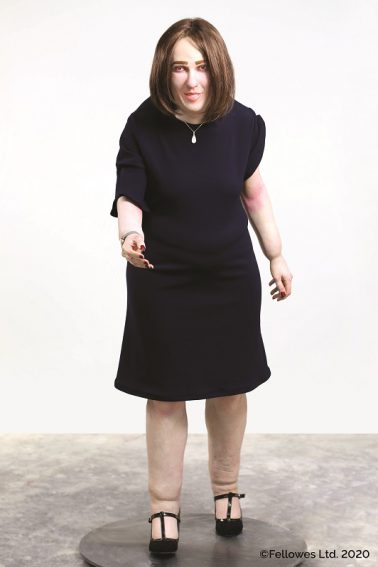Why office ergonomics matter
 The poor physical and mental health effects of working in an office setting are many and varied. From poor posture and eyesight problems to repetitive strain injury and stress-related illnesses, there are many ailments that plague the typical office worker. Can we reduce the negative impact of office work with good office ergonomics, and how exactly do we do that?
The poor physical and mental health effects of working in an office setting are many and varied. From poor posture and eyesight problems to repetitive strain injury and stress-related illnesses, there are many ailments that plague the typical office worker. Can we reduce the negative impact of office work with good office ergonomics, and how exactly do we do that?
Employer responsibilities
All employers have a duty to protect the health and safety of employees, regulated under the Health and Safety at Work Act (HSWA) 1974. This includes ensuring that workers are protected from workplace hazards, illnesses and injuries, and that a worker’s duties do not lead to their physical or mental welfare being compromised.
In addition, the Health and Safety (Display Screen Equipment) Regulations 1992 cover specific issues related to health risks posed by working on Display Screen Equipment (DSE), which includes computers, laptops, tablets, smartphones and any other device with a display screen. Workers using these devices must be given adequate training and regular breaks, and employers are also responsible for vision screening tests and corrective eyewear, if the eyewear is required as a result of DSE work.
How is employee health impacted?
Health and safety at work is a serious issue, with the Health and Safety Executive (HSE) estimating that 1.4 million UK workers are suffering from work-related ill health of some kind. Office workers suffer from a range of minor and major health problems related to issues such as sedentary work, long periods of time spent seated, display screen use, keyboard use and general repetitive movements. The HSE has a specific section on office health and safety that addresses a range of factors and solutions. One solution that may help your employees is to consider office ergonomics.
Ergonomic workstations
Paying attention to office ergonomics can go a long way when it comes to protecting the health of office workers. An ergonomic workstation is simply one that supports the safe and healthy positioning of the body while working. This will generally include the display screen being an arm’s length away from the worker’s face, the keyboard being positioned so that wrists are straight and hands are at or below elbow level, and a chair set at a height that allows the knees to be level with the hips when feet are flat on the floor, or on a foot rest.
It is possible to buy ergonomic office furniture, including ergonomic chairs that support workers’ spinal curves, and foot rests to ensure that feet are always flat on the floor when seated. It is also possible to ensure that workstations are set up for optimal health by making minor adjustments to your employees’ work areas. The Mayo Clinic highlights several adjustments that can be made to ensure that your office ergonomics are supporting employee health.
Lifestyle issues
The NHS has also called attention to how lifestyle issues can impact the health of office workers. Office work is generally fairly sedentary, and most office workers sit for long periods each day. Guidance from an expert panel, commissioned by Public Health England, suggests that office workers should stand up for at least two hours a day and generally be more active.
Sitting for too long is linked not only to common minor health complaints but also to issues such as cardiovascular disease and diabetes. Along with ergonomic chairs and other workstation adjustments, it is likely that many office workers could benefit from the option of standing desks in order to spend a little less time sitting each day.
Long-term impact – the work colleague of the future
The innovative office solutions provider Fellowes has created a life-size representation of what the office worker of the future might look like if we continue to ignore office ergonomics and work with badly designed workstations. Emma – Colleague of the Future is based on the results of a report developed with behavioural futurist William Higham and a panel of experts in ergonomics, occupational health and wellbeing at work. This hypothetical office worker of the future suffers a variety of ailments and issues linked to current office conditions in many workplaces. The ailments include:
 A permanently bent back
A permanently bent back- Varicose veins
- A rotund stomach
- Dry, red eyes
- Swollen wrists and ankles
- Sallow skin
- Eczema
- Red forearms and upper legs
- Swollen sinuses and hairs on the ears and nose
These ailments are a result of a sedentary lifestyle, too much sitting, a lack of natural light, and poor indoor air quality, among other things. They may seem drastic, but the report they are based on included a survey that revealed that nine out of 10 British office workers are already suffering some level of poor health due to their work environment.
It is easy to brush off the minor ailments that most office workers suffer as being a natural consequence of a more sedentary, office-based economy. After all, traditional industries such as farming and coal mining were hardly danger-free. However, the dangers of long-term office work are potentially serious, and, most importantly, can probably be avoided. It’s time for companies to pay attention to the importance of office ergonomics, and invest in creating office workstations that support employee health.
Emma – work colleague of the future was created by Fellowes, the healthy workspace specialists: www.fellowes.com/emma. ©Fellowes Ltd 2020.
